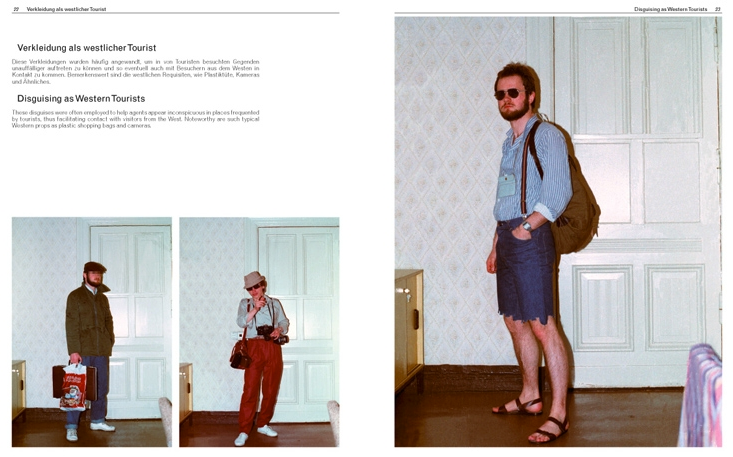
(Review) TOP SECRET: Images From the Stasi Archives

This wonderful book of photographs doesn’t contain many works of art. But the book itself is one, consisting of a multitude of snapshots culled from the archives of the Stasi, that all-seeing intelligence bureau of the Soviet satellite state of East Germany.
The Stasi operation put NSA into shame, whatever Edward Snowden may reveal. When dismantled upon German reunification in 1990, after the fall of the Berlin Wall, it employed over 90,000 full-time workers, and somewhere between 200,000 to 500,000 part-time informers. That’s close to one Stasi agent for every 50 citizens. They had rooms full of underwear samples for dogs to sniff when a scent was necessary to trail someone. Eat your heart out, NSA.
If you look for the definition for “banality of evil,” it’s found here in Simon Menner’s insidiously humorous volume of photos, TOP SECRET. If you look at the photos without understanding what they represent, they range from puzzling to laugh-out-loud hilarious. We see paunchy men dressed up as what passed for hipsters in 1970s GDR, or the Stasi vision of the filthy rich. We see disguises for any possible occasion, with a combination of wigs, clothing and attitude. We see how to apply a fake mustache. It appears preposterously ridiculous.
But when you understand what you’re looking at, which is the massive machinery to keep tabs on every citizen (which included stealing their underpants, photographing their kitchen appliances and stashes of Jerry Cotton magazines) in order to keep them in line and loyal to the sub-Soviet communist regime which would throw you in jail for uttering a few badly phrased words in the presence of your informant preacher … suddenly a deeply sinister edge creeps in.

Even an innocent-looking coffee maker turns menacing: It’s a Western appliance, suggesting smuggled goods. Did the owner go to prison or were they forced to inform on their neighbors and co-workers?
All this is fascinating, made more so with intelligent commentary (bilingually in German and English) and sharp subject selection. Most collections like this would stick to the funny costumes, or focus on the clumsy close-combat-technique photo sessions. Maybe even on those shoots where the dissidents were forced to re-enact their crimes.
It’s all here, but Menner has chosen to add oddball categories like “Animals” or “The Swan Grave.” The brief animals section shows a sheep posing next to a Verboten! sign, or a cat resting on a bed. As the commentary suggests, these are images filed in the Stasi archives, showcased here to perhaps humanize the agent, whose “inner photographer” got the best of him while ransacking a suspects apartment. The lack of information about the sequence of photographs found in the office walls of the leader of Stasi, Erich Mielke, depicting the burial of a swan only fires up the imagination.
TOP SECRET is a quick read, a great discussion piece, illuminating the functions of a surveillance state. It’s history, fashion and a peek behind the (iron) curtains. I’d also like to recommend as a companion to this delightfully disquieting volume Anna Funder’s STASILAND, which broadens the canvas and brings forth a sense of life in DDR under Stasi, through conversations with Stasi officials, their victims, and those who fell somewhere in between the two. These two books beautifully complement each other. —JT Lindroos